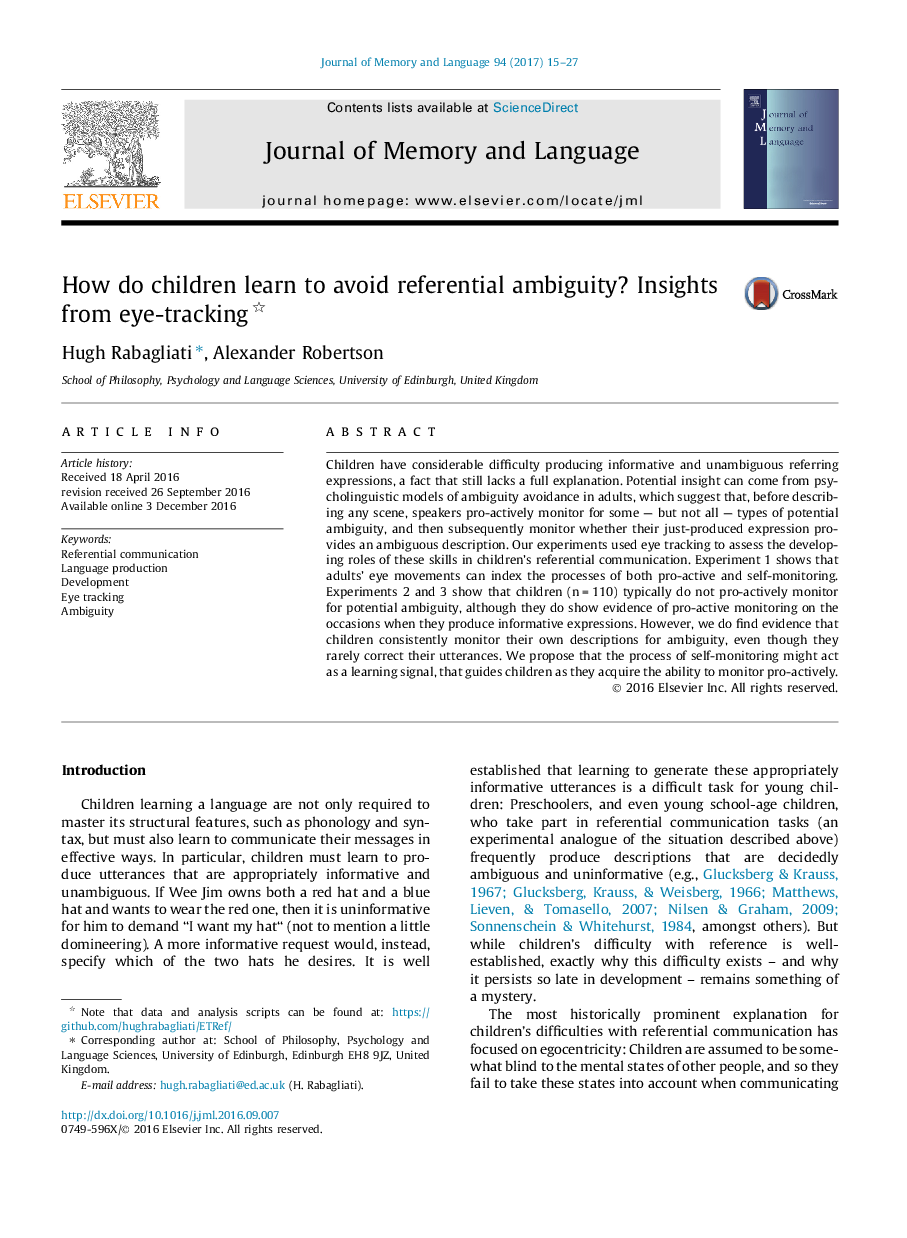| کد مقاله | کد نشریه | سال انتشار | مقاله انگلیسی | نسخه تمام متن |
|---|---|---|---|---|
| 5042511 | 1474625 | 2017 | 13 صفحه PDF | دانلود رایگان |

- We use eye tracking to assess how children learn to avoid referential ambiguity.
- Unlike adults, children fail to pro-actively monitor whether their environment makes referential ambiguity likely.
- Like adults, children monitor their own speech and notice if it is ambiguous.
- We suggest that self-monitoring might provide a learning signal that helps children master pro-active monitoring.
Children have considerable difficulty producing informative and unambiguous referring expressions, a fact that still lacks a full explanation. Potential insight can come from psycholinguistic models of ambiguity avoidance in adults, which suggest that, before describing any scene, speakers pro-actively monitor for some - but not all - types of potential ambiguity, and then subsequently monitor whether their just-produced expression provides an ambiguous description. Our experiments used eye tracking to assess the developing roles of these skills in children's referential communication. Experiment 1 shows that adults' eye movements can index the processes of both pro-active and self-monitoring. Experiments 2 and 3 show that children (n = 110) typically do not pro-actively monitor for potential ambiguity, although they do show evidence of pro-active monitoring on the occasions when they produce informative expressions. However, we do find evidence that children consistently monitor their own descriptions for ambiguity, even though they rarely correct their utterances. We propose that the process of self-monitoring might act as a learning signal, that guides children as they acquire the ability to monitor pro-actively.
Journal: Journal of Memory and Language - Volume 94, June 2017, Pages 15-27